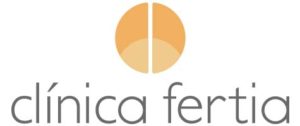FISH (Fluorescent In Situ Hybridisation)
What is the FISH Technique?

To do this, the genetics laboratory performs a hybridization technique using DNA probes, with special affinity to certain chromosomes. The results must be analysed using equipment specially prepared to detect the fluorescence emitted by these probes.
More information
Any cell in the human body has 23 pairs of chromosomes. However, gametes (eggs and sperm) to be chromosomally normal have to have half, that is, 23 chromosomes. If the division process, known as Meiosis, is not correct, the chromosomes are not distributed evenly and abnormal gametes will form. If an affected male gamete fertilizes a normal egg, the embryos will also carry this abnormality.
Indications
Couples have a history of repeated miscarriages.
There has been a previous pregnancy with chromosopathy.
The male has undergone radio or chempotherapy treatment.
Embryo implantation failures.
The semenogram is of very poor quality.
What is the process for the FISH technique?
The semen sample for FISH analysis must be collected complying with a series of indications, which are:
Collection in a sterile container; at the clinic we will provide one or one may be purchased at any chemist.
Sexual abstinence between 2 and 5 days.
Always collected by masturbation, never with a condom. It is advisable to wash both hands and glans prior to collection..
Collect the entire sample, if any part is spilt, it must be notified when handing in the sample.
If the sample is collected outside the clinic, it is important to ensure that its temperature does not drop below 20ºC and that it does not undergo sudden changes in temperature. To do this, it must be carried in a pocket close to the body. The time between collection and delivery should be no more than one hour.

Frequently asked questions about reproduction treatments
If you would like more information about our treatments, we are always available to help and answer any of your questions.
How long do I have to wait to start treatment?
How many attempts can I make?
In the case of artificial insemination, here at the clinic we recommend a maximum of four attempts, since 90% of pregnancies occur in the first four cycles.
Regarding In-vitro fertilisation or microinjection, our clinic never makes more than four attempts using these techniques.
In the case of egg donation, it is more difficult to establish a limit, this will normally be determined by psychological and also economic factors.
Can you use these techniques when you have already entered menopause?
In these cases, the reception of eggs from a donor must be used.
What are the biggest concerns of egg or sperm recipient couples?
Another factor that concerns a couple is the health of the donors and the physical resemblance to them.
In our centre, both in the case of sperm donors and egg donors, our goal is to seek that the physical resemblance is as similar as possible to the parents.
Are these treatments expensive?
Clínica Fertia is a pioneer in maintaining an honest and transparent policy. Since 2002 we have published the information of the cost of our treatments on our website.
